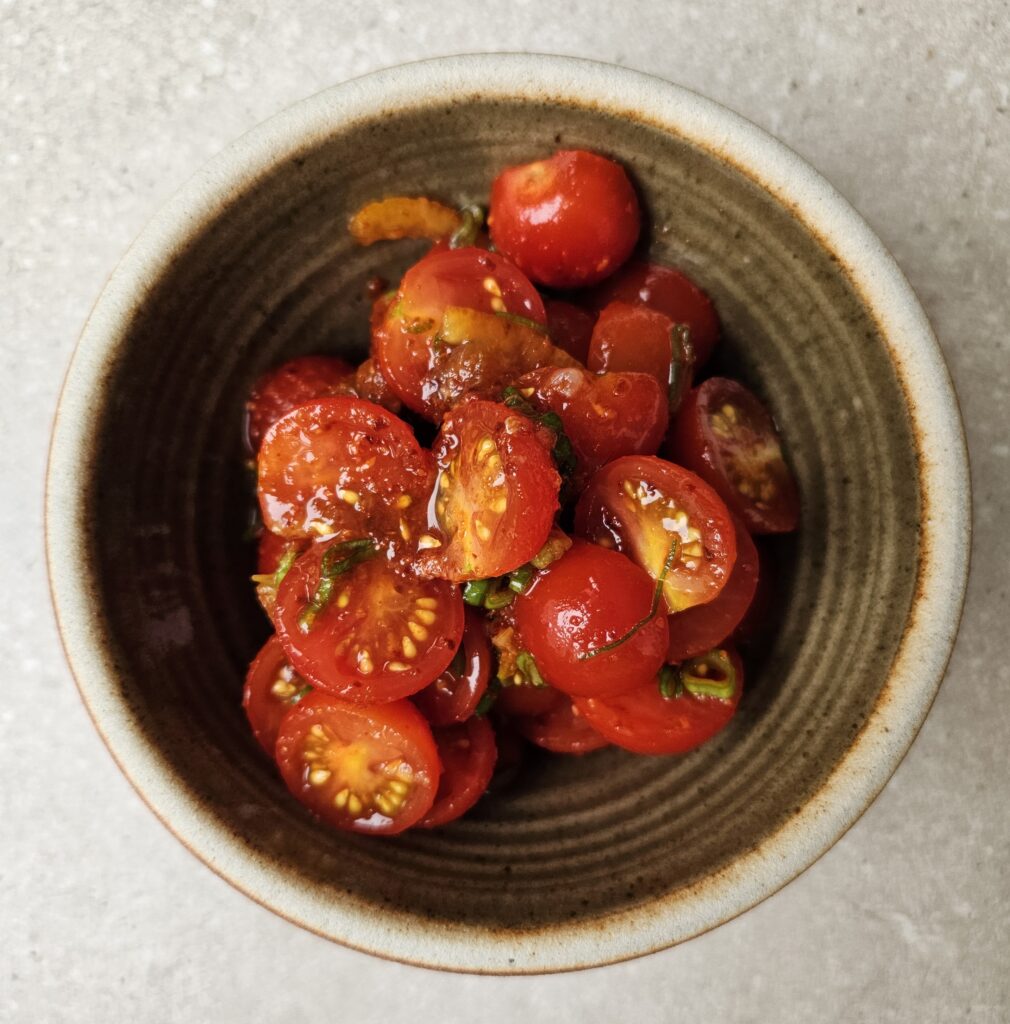
My experience of pickles has until now not been a positive one. I can find all sorts of reasons not to like them: too soft, too dense, too acidic, unattractive, has added colour, fiddly to eat, too large a bottle. I can think of only two fresh pickles I have liked, namely the cucumber pickle at Yauatcha and the pickles at otto in Berlin. What I liked was the balance between the vinegar and the sugar.
I recently made a batch of pickled carrots which changed things for me (next post). But first, a recipe from the same book I have been using. FERMENT, by Kenji Morimoto (published by One Boat, ISBN 978-1035053742) is part instruction and part recipe book. If you don’t want to make your own kimchi, miso, pickles, kombucha or cheong (one part sugar to one part fruit), you can use ready made versions of these items and cook from the given recipes.
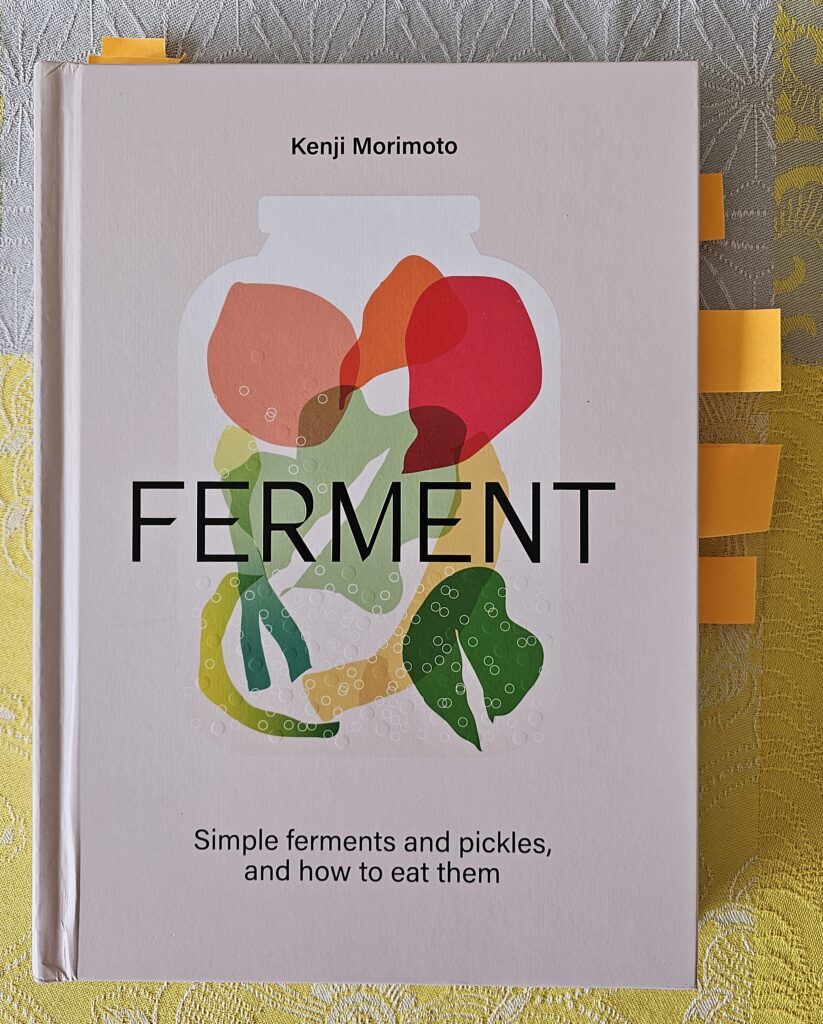
Leafing through the book I found a couple of recipes which were easy to make and very flavourful. The first one I am sharing here is an adaptation of the Cherry Tomato Kimchi (page 66 of the book). It calls for kombucha citrus syrup which ideally you would have made yourself.
Discussing kombucha around our dining table, we agreed this was a challenge too far with our busy lives. I am not sure where to buy ready-made kombucha citrus syrup, substituting instead Korean citron tea/ 유자차 which is a kind of loose jam made from yuja fruit (yuzu) and honey. It is a popular drink made with hot water, to relieve colds and also to warm up your body on cold days. I have always used it as an ingredient and not as a drink. See here for two cake recipes.
Cherry tomatoes are in season and this simple recipe takes only a few minutes to prepare. Let the salad steep for an hour before serving, although it is good instantly. Any leftovers get more watery after a day or two as the salt draws out the moisture from the tomatoes. If you prefer a firmer tomato texture, it is an idea to use up the leftover soft tomatoes in a tomato-based pasta sauce, soup or even shakshuka.
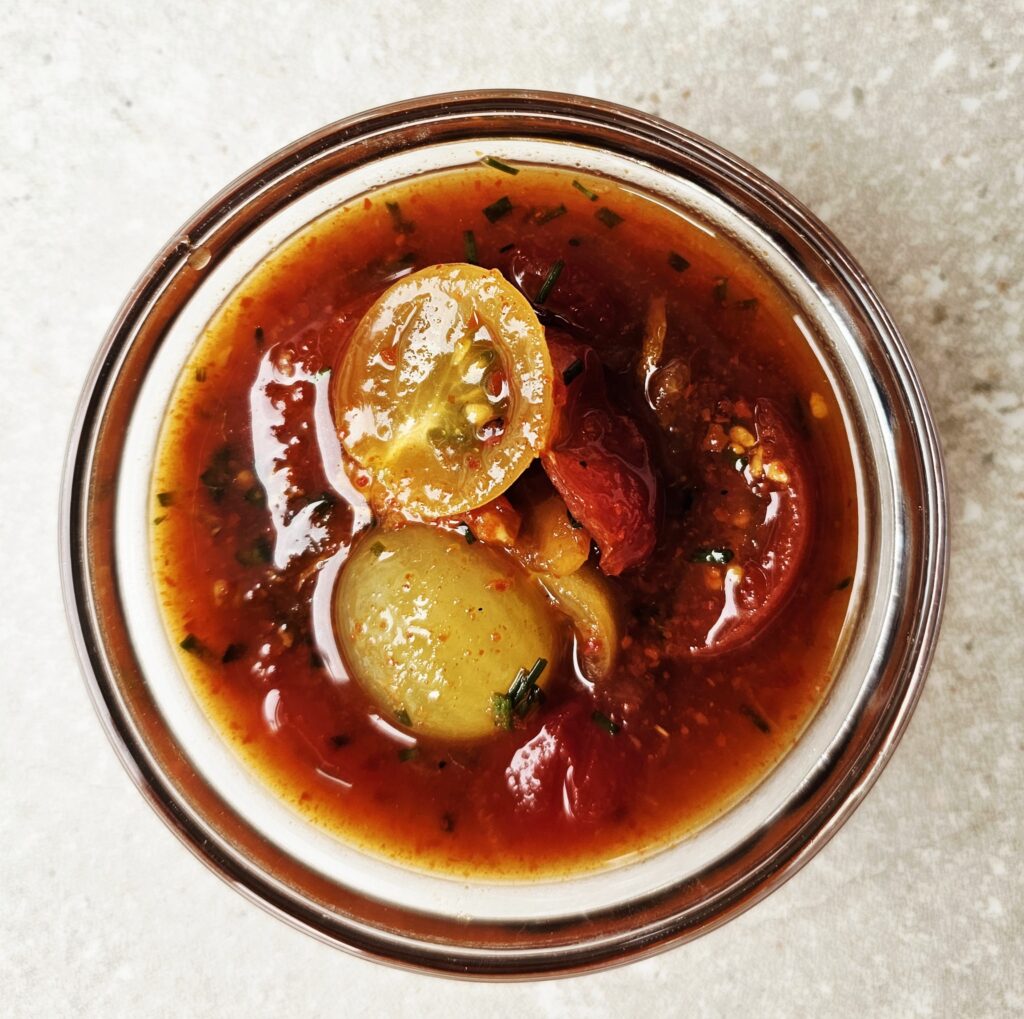
On my third attempt I omitted the ½ teaspoon salt and the salad tasted just as good, so I have made this optional in the recipe. On two occasions I used chives instead of spring onion greens, picking some from the vegetable trug in our patio. Any small cherry-type tomato will do, in original orange or in shades varying from pale yellow to deep purple.
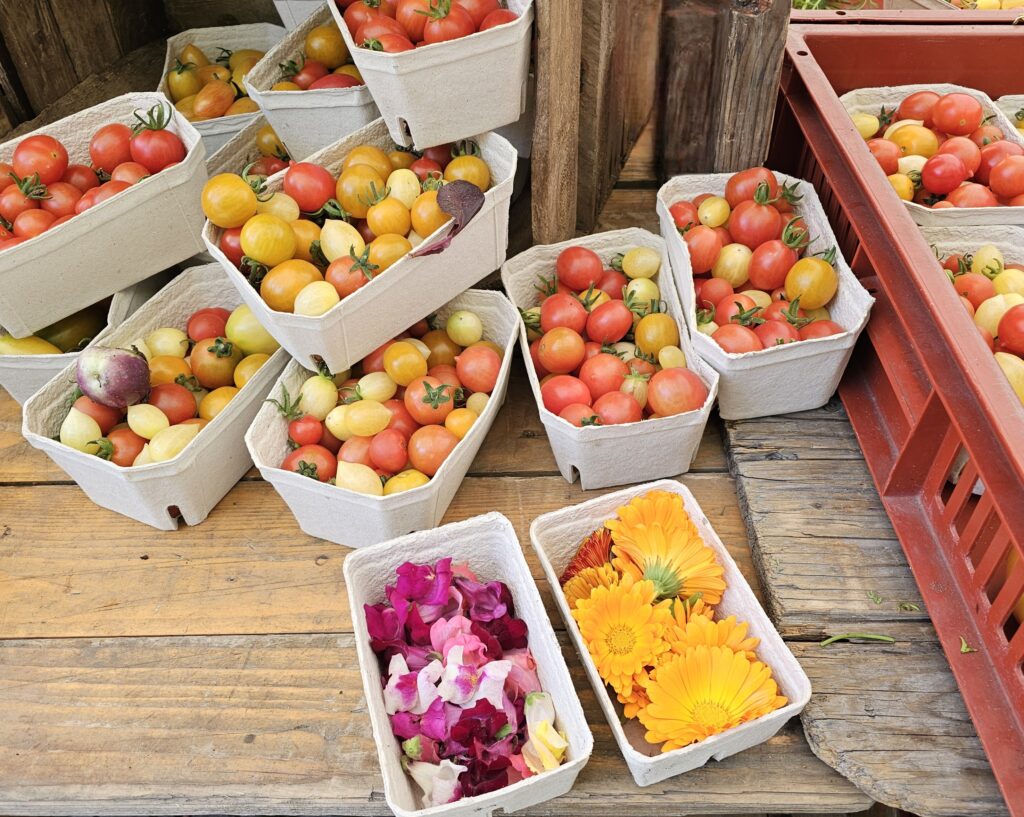

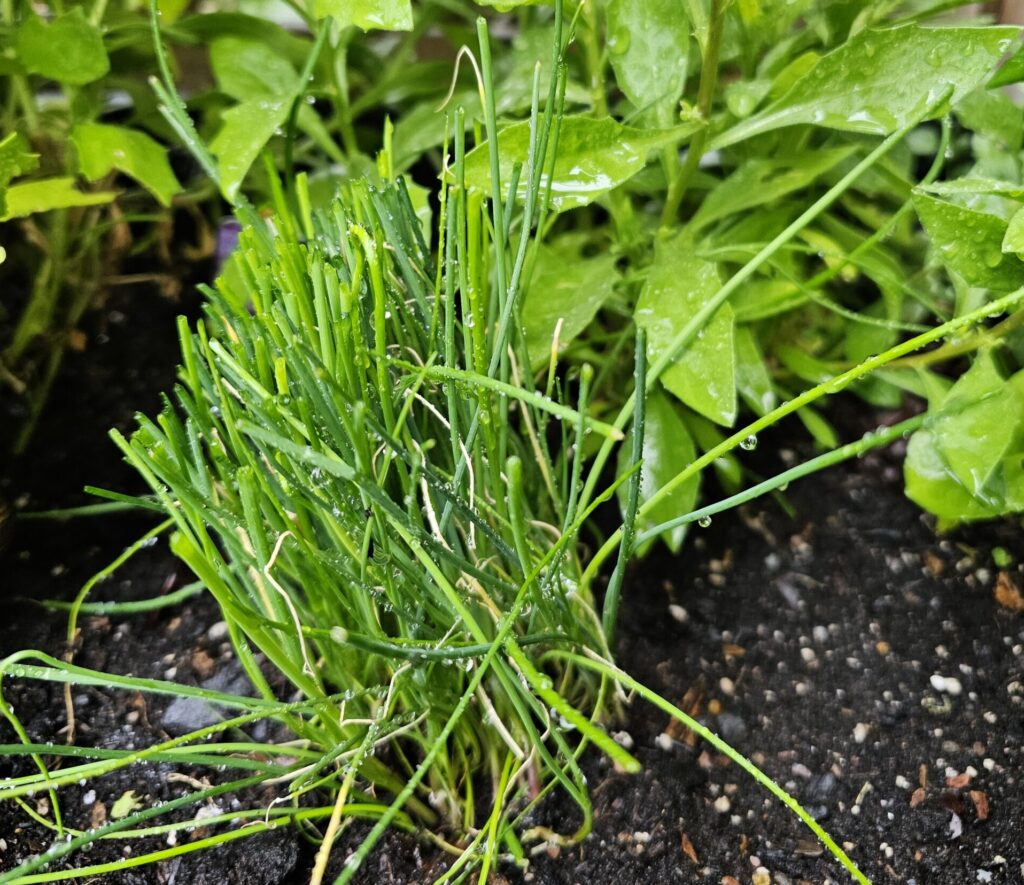
I have been thinking about other types of vegetables and fruit which could be given the same treatment. Slightly underripe mangoes and pineapple, the ones that disappoint upon skinning, cutting and tasting, could be turned into a kind of instant savoury-sweet chutney with this dressing. I have given this alternative recipe at the end of the post.
For the Salad:
450 g cherry tomatoes
½ teaspoon fine sea salt (optional)
1 large garlic clove
1 tablespoon lemon juice
4 spring onions, green part only, sliced thinly
OR
1 tablespoon finely sliced chives
1 tablespoon fish sauce (I use Red Boat brand)
2 tablespoons Korean yujacha / 유자차 / Korean citrus tea
1 tablespoon coarse gochugaru / 고춧가루 / Korean ground chilli flakes
How to Make:
Wash and halve the cherry tomatoes. Place in a large mixing bowl and (optional) sprinkle with the salt to draw out excess moisture. Set aside for 10 minutes.
Place the lemon juice in a small bowl and grate over the garlic. Mix and set aside for a few minutes to soften the garlic’s intensity.
Add the lemon juice to the tomatoes (no need to drain the liquid), along with the spring onions/ chives, fish sauce, yujacha and gochugaru. Give everything a vigorous stir to mix well.
Marinate for around an hour at room temperature. Pour into a smaller bowl before serving.
Store any leftover salad in an airtight container in the fridge, and consume within a week.

For the mango/ pineapple salad:
450 g slightly underripe mango/ pineapple, weight without seed or core
½ teaspoon fine sea salt (optional)
1 large garlic clove
2 tablespoon lime juice
4 spring onions, white part only, sliced thinly
1 tablespoon fish sauce (I use Red Boat brand)
2 tablespoons Korean yujacha / 유자차 / Korean citrus tea
1 tablespoon coarse gochugaru /고춧가루 / Korean ground chilli flakes
How to Make:
Remove the seed/ core from the fruit and cut into small 2 cm cubes. Place in a large mixing bowl and (optional) sprinkle with the salt to draw out excess moisture. Set aside for 10 minutes.
Place the lime juice in a small bowl and grate over the garlic. Mix and set aside for a few minutes to soften the garlic’s intensity.
Add the lime juice to the fruit (no need to drain the liquid), along with the spring onions, fish sauce, yujacha and gochugaru. Give everything a vigorous stir to mix well.
Marinate for around an hour at room temperature. Pour into a smaller bowl before serving.
Store any leftover salad in an airtight container in the fridge, and consume within a week.
In the next post I will share a recipe for a simple carrot and celeriac pickle.
